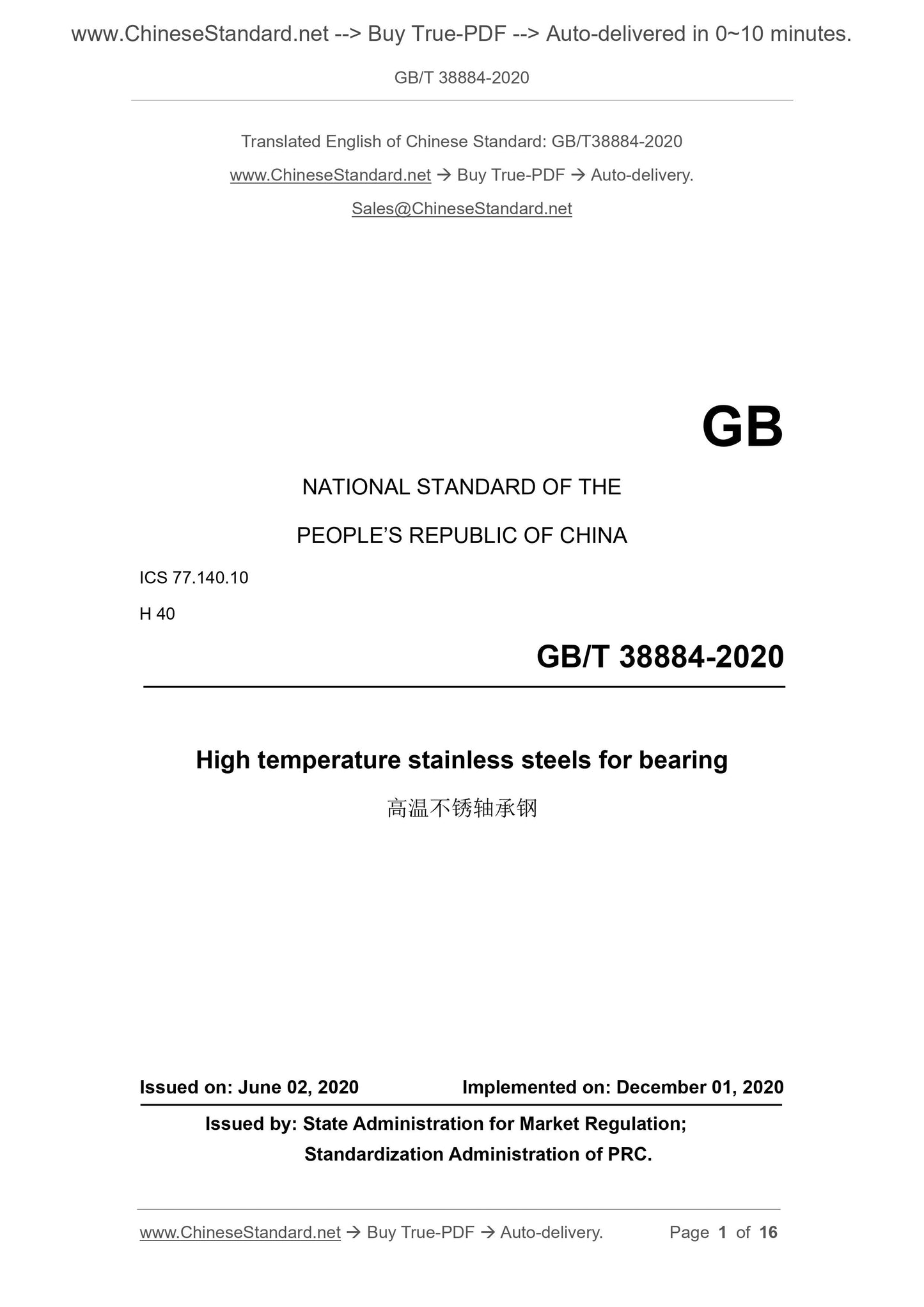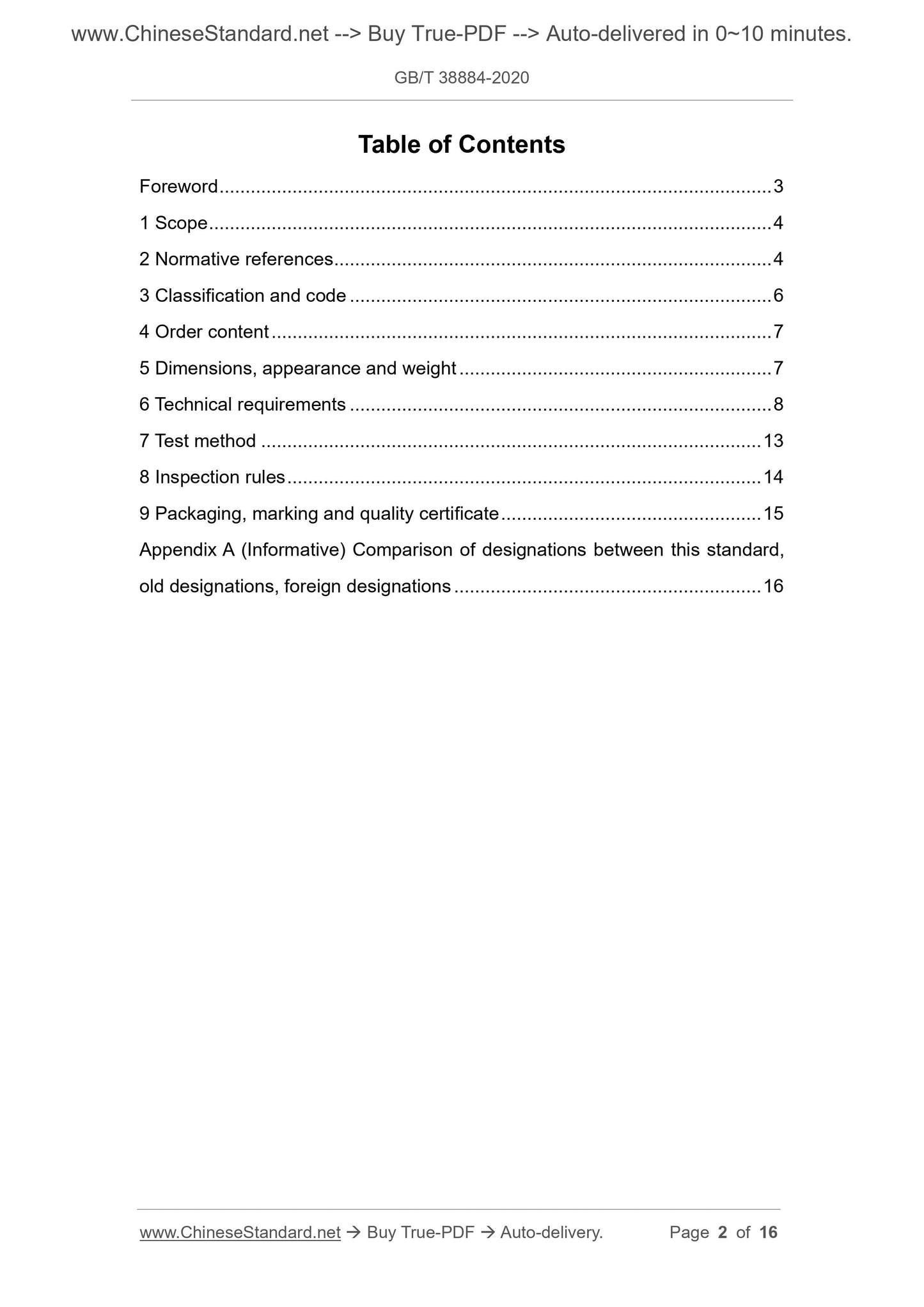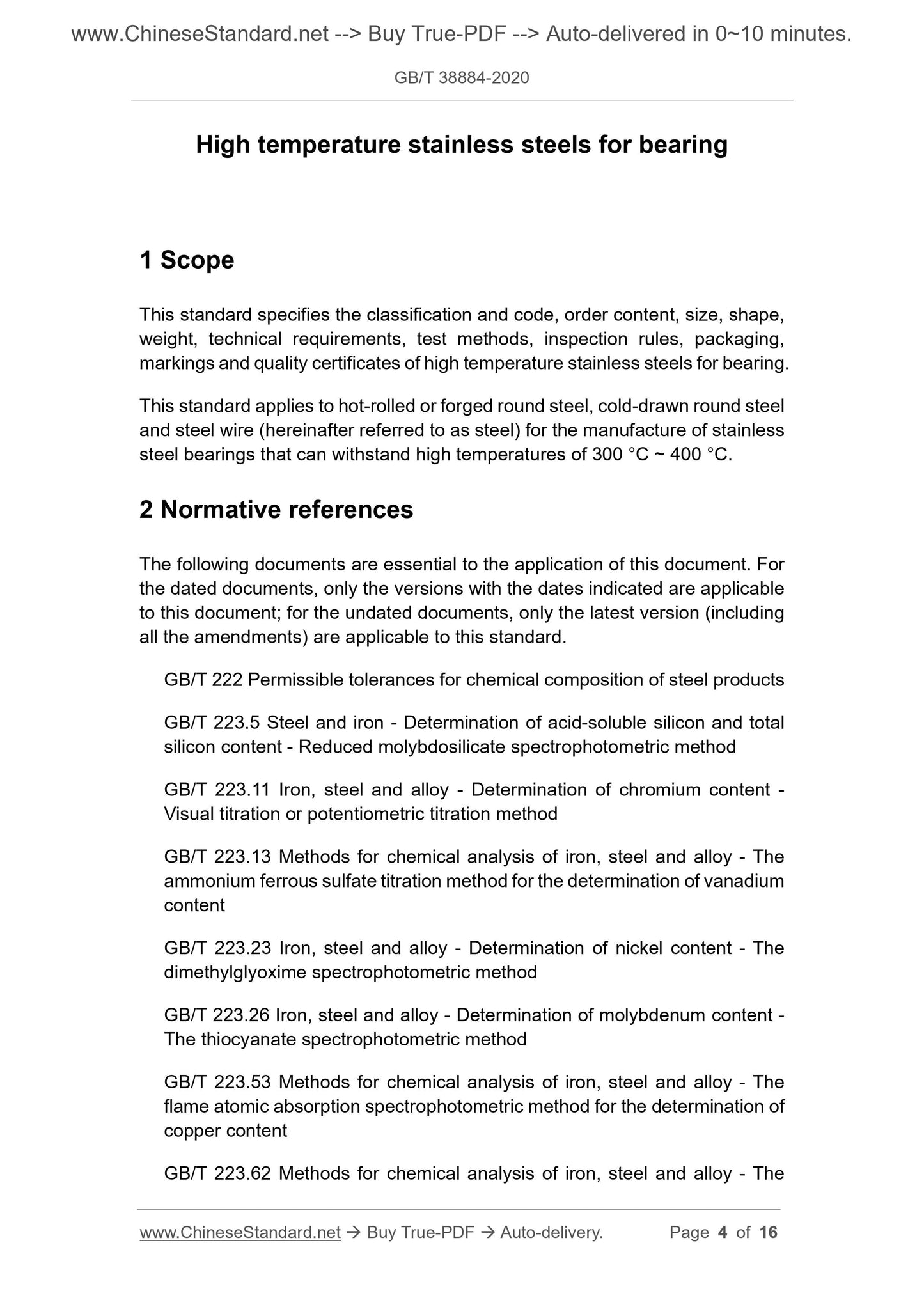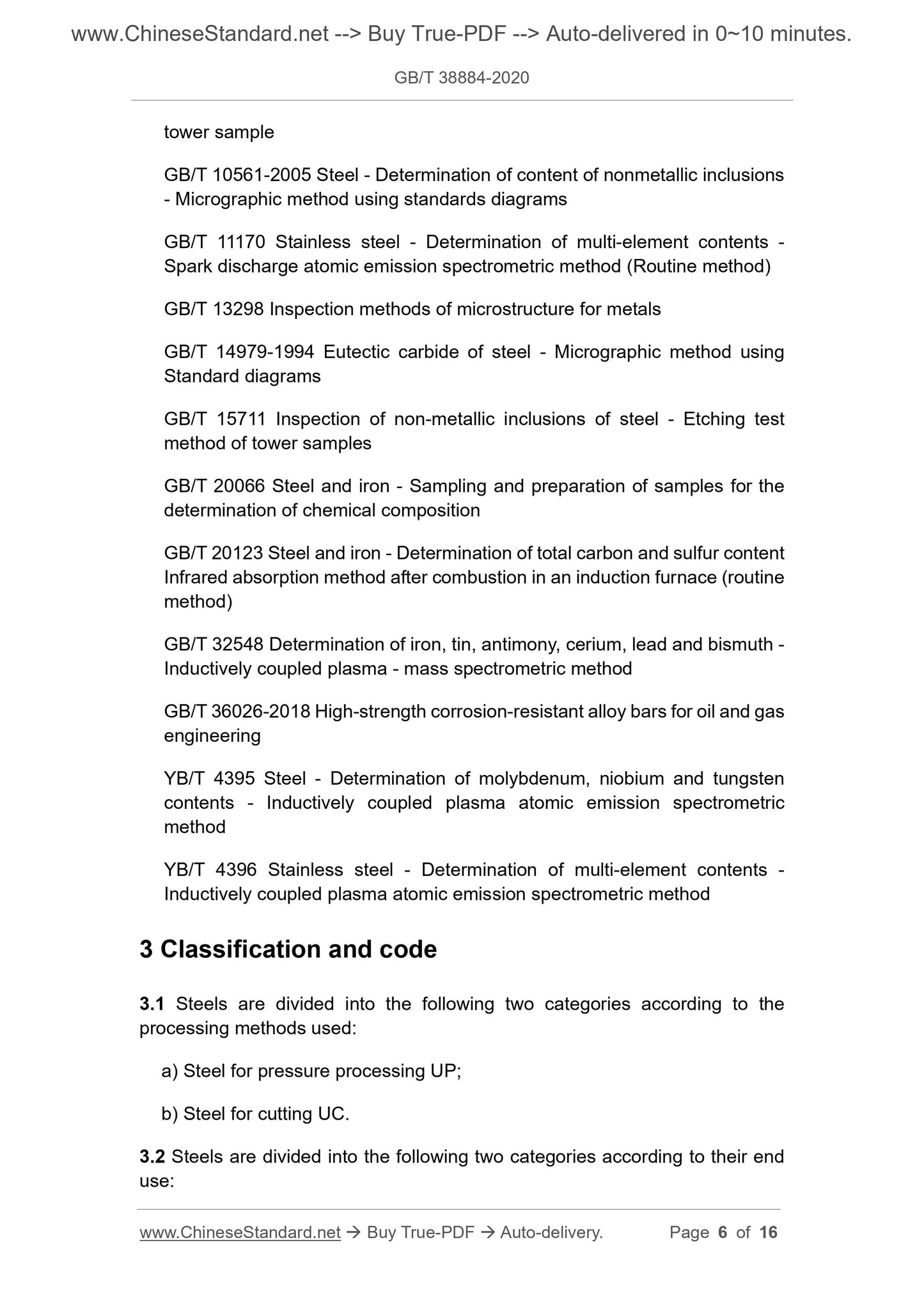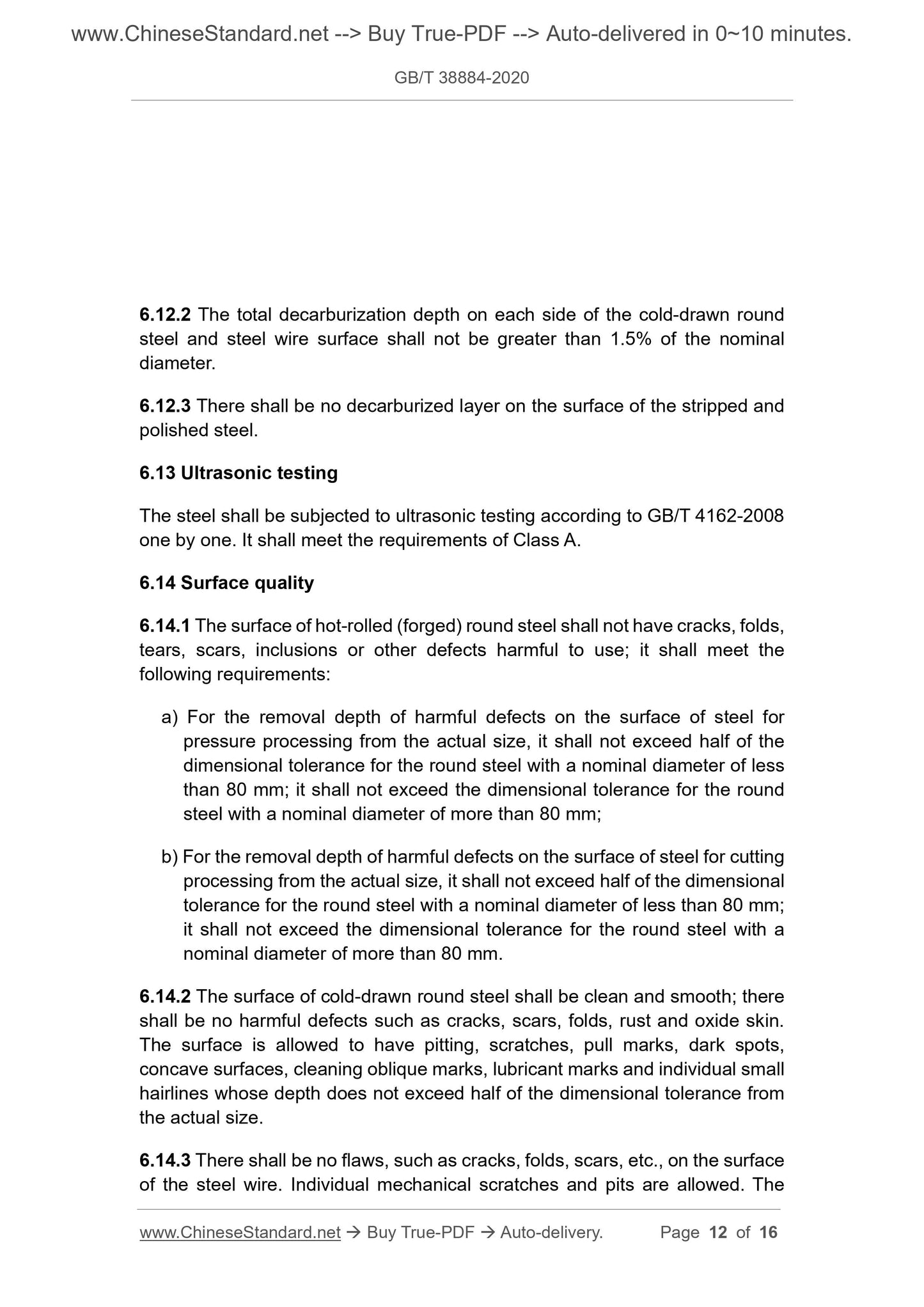1
/
of
5
www.ChineseStandard.us -- Field Test Asia Pte. Ltd.
GB/T 38884-2020 English PDF (GB/T38884-2020)
GB/T 38884-2020 English PDF (GB/T38884-2020)
Regular price
$170.00
Regular price
Sale price
$170.00
Unit price
/
per
Shipping calculated at checkout.
Couldn't load pickup availability
GB/T 38884-2020: High temperature stainless steels for bearing
Delivery: 9 seconds. Download (and Email) true-PDF + Invoice.Get Quotation: Click GB/T 38884-2020 (Self-service in 1-minute)
Newer / historical versions: GB/T 38884-2020
Preview True-PDF
Scope
This standard specifies the classification and code, order content, size, shape,weight, technical requirements, test methods, inspection rules, packaging,
markings and quality certificates of high temperature stainless steels for bearing.
This standard applies to hot-rolled or forged round steel, cold-drawn round steel
and steel wire (hereinafter referred to as steel) for the manufacture of stainless
steel bearings that can withstand high temperatures of 300 °C ~ 400 °C.
Basic Data
| Standard ID | GB/T 38884-2020 (GB/T38884-2020) |
| Description (Translated English) | High temperature stainless steels for bearing |
| Sector / Industry | National Standard (Recommended) |
| Classification of Chinese Standard | H40 |
| Classification of International Standard | 77.140.10 |
| Word Count Estimation | 14,142 |
| Date of Issue | 2020-06-02 |
| Date of Implementation | 2020-12-01 |
| Issuing agency(ies) | State Administration for Market Regulation, China National Standardization Administration |
Share
